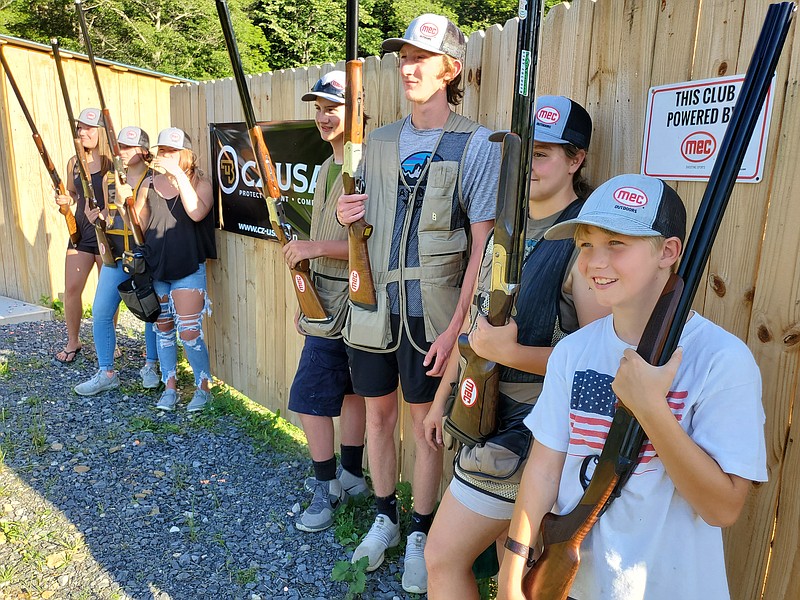It's hotter than a $2 pistol on Route 92 in West Virginia, and Makayla Scott and a group of young shooters are turning up the heat. Shotguns are blazing on the Field of Dreams, which exists mostly because of Scott's drive and determination.
At this unique facility, young shooters can fire a shotgun on a trap, skeet, or five-stand range. All they have to do is call ahead, show up and be introduced to the wonders of shotgun shooting sports.
The Field of Dreams is all about shotgun sports, but young (and older) shooters have a wide array of different types of events they can be involved with. There are organized competitions in big-bore rifle, small-bore rifle, air rifle, air pistol, bull's-eye pistol, silhouette rifle, silhouette pistol, muzzle loader, many different events in the combat and tactical genre -- and to be honest, this is just scratching the surface.
Recently I had the good fortune to meet with some folks who work in the shooting sports industry and are well versed in the outdoors world. I got to sit down with them and go over some of the problems we face regarding the future of hunting and shooting, as well as possible solutions. I was a little humbled to sit with John Linquist, relationship manager at MidwayUSA Foundation; Danielle Faris, marketing manager at MidwayUSA Foundation; David Miller, shotgun product manager and pro shooter at CZ-USA; and Laura Billington and Dan Dittmann from MEC Outdoors, which makes clay target throwers.
MidwayUSA is a 501(c)(3) public charity working to sustain and grow the shooting sports industry by providing long-term funding to youth shooting teams. The foundation's goal is to pose endowed funds for the support and advancement of youth shooting sports. MidwayUSA helps communities and organizations raise funds to support their high school, college and other youth shooting teams and activities. They also manage a variety of special-purpose endowed funds for the support and advancement of youth shooting sports.
"Right now we have about 4 1/2 million young shooters participating in shooting sports; 75% of those involved in youth shooting sports say they want to get into hunting," Linquist said.
"Yes, that has flipped from when we started hunting," Miller said. "We started hunting, sitting out there on a bucket in fence line waiting on a dove to fly by, or chasing pheasants. Through hunting, we learned about trap and skeet shooting and wanted to try that.
"We learned how to shoot a shotgun by hunting, and now young people are learning how to shoot through youth shooting sports, and many want to move on to hunting, but how do we do that? So now that is our dilemma: How do we get them into the field to hunt? The segue from the trap field to the pheasant field seems easy, but it's not."
In my own not-so-humble opinion, we have struggled for years with the dwindling hunter numbers monster.
This has been discussed to the levels of beating the dead horse, but here's the basic premise again: Older hunters — the baby boomers like me — are aging out of hunting. We as a group go to our reward and pass on, or we just quit hunting after reaching a certain age. The younger generations so far are not filling in this gap, replacing the dads and granddads and uncles who came before them. The math has been done on this many times, and it is not pretty.
It is easy to predict a severe shortfall in hunter numbers that will have many repercussions down the road, the greatest of which will be a big decrease in funds through the Pittman Robertson Act. This is the main source of funding for conservation-based programs to state fish and wildlife agencies.
For decades, hunters have funded game management, public land purchases and other initiatives vital to keeping hunting alive in these United States. An excise tax is charged each time we purchase guns, ammunition, archery equipment and other outdoors sporting goods. This money is allotted to the states based on the number of licensed hunters they have. As the number of hunters drops, so does the hunting gear purchased, and down goes the amount of money available to drive the engine of hunting-based conservation. Guns and ammo purchased for the youth shooting sports programs help with this, but we need to find a way to get these young shooters in the hunting woods, too.
This problem is not insurmountable, it can be done, and I have great confidence in our hunting and shooting public. I am very encouraged with the prospect of a collaborative initiative of outdoors companies and organizations working together to crack the nut of decreasing hunter numbers.
You know the old saying: "It is amazing what we can accomplish when nobody cares who gets the credit."
"Guns & Cornbread" is written by Larry Case, who lives in Fayette County, W.Va. You can write to him at larryocase@gmail.com.
